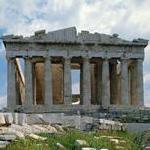 “Alea iacta est” – Julius Ceasar
“Alea iacta est” – Julius Ceasar
The NASDAQ crossed the 5,000 mark for the first time since the year 2000 on Monday. What a journey it has been. The world hardly resembles itself just fifteen years later. Practically everything has changed.
Back then, pre-9/11, the world was still our oyster. We just knew we’d attain whatever we dreamed with a little hard work and determination. But we never could’ve imagined how hard it would actually be just to scratch for our scraps. Naturally, with this latest NASDAQ milestone, we have some questions…
What does NASDAQ 5,000 really mean, anyway? Does it stand for something? Does what’s standing behind it have the strength to hold things up this time? Or will it roll over and crash by 80 percent again?
No one really knows. But here at the Economic Prism we have a hunch the NASDAQ will have a significant correction sometime soon. Perhaps it will fall by 20 percent…or possibly 40 percent, or even more.
Certainly, NASDAQ stocks are much stronger now than they were 15 years ago. Real companies – like Google, Apple, and Cisco – comprise it. It’s more than just IPO speculative fervor that’s propelled it back up and over 5,000. Nonetheless, we think it has something to do with a much more significant crossing than the 5,000 marker…
Crossing the Rubicon
Much of what’s propelled the NASDAQ above 5,000 is what’s propelled the S&P 500 above 2,000 and abstract canvas paintings into the upper stratosphere. Namely, cheap credit served up by the Federal Reserve. People will throw cheap money at just about anything and everything.
What would removing the Fed’s cheap credit do to stock and art prices? Obviously, it would result in a significant price decline. Thus there’s no turning back…
“Ben S. Bernanke knew the Federal Reserve was passing the point of no return in March 2009, when it dramatically increased bond purchases to battle the severest recession since the Great Depression,” reported Bloomberg on Wednesday.
‘“I think that just crossing the Rubicon will have a significant announcement effect, because it will signal our willingness to do more if necessary in the future,’ then-Chairman Bernanke told the Federal Open Market Committee as officials debated a $1.15 trillion increase in asset purchases, according to transcripts released in Washington on Wednesday.
“Bernanke was answering a call from officials to escalate its policy response even more emphatically by doing more under a campaign known as quantitative easing, according to transcripts released Wednesday by the Federal Reserve. The records for 2009 were released with the customary five-year lag and totaled almost 2,000 pages.
‘“The only thing worse than buying Treasuries is to buy them in such a tepid way that we don’t have any effect,’ Governor Kevin Warsh argued earlier in the discussion. ‘“I think if we’re in, we’re in. We’re crossing the Rubicon.”’
Hence, where does that leave us?
The Die is Cast
When Julius Caesar ventured across the Rubicon River in Northern Italy in 49 BC, he knew there was no turning back. Crossing the river was an act of insurrection. Once across his army would have to confront Pompey and make war on Rome. Suetonius, a Roman historian and biographer, made the following eye witness account on January 10, 49 BC…
“Coming up with his troops on the banks of the Rubicon, which was the frontier of his province, he [Julius Caesar] halted for a while, and revolving in his mind the importance of the step he meditated, he turned to those about him, saying: ‘Still we can retreat! But once let us pass this little bridge, – and nothing is left but to fight it out with arms!’
“Even as he hesitated this incident occurred. A man of strikingly noble mien and graceful aspect appeared close at hand, and played upon a pipe. To hear him not merely some shepherds, but soldiers too came flocking from their posts, and amongst them some trumpeters. He snatched a trumpet from one of them and ran to the river with it; then sounding the “Advance!” with a piercing blast he crossed to the other side. At this Caesar cried out, ‘Let us go where the omens of the Gods and the crimes of our enemies summon us! ‘Alea iacta est’ [the die is now cast]!”
So, too, for the Fed…the die is cast. Though they may still pretend they’ll one day be able to contract their massively inflated balance sheet, the truth is, they never will. At this point, like Julius Caesar after crossing the Rubicon, they cannot turn back. To do so now would mean immediate destruction. Their only option is to push forward…they must disfigure financial markets and the economy ad infinitum.
Sincerely,
MN Gordon
for Economic Prism




